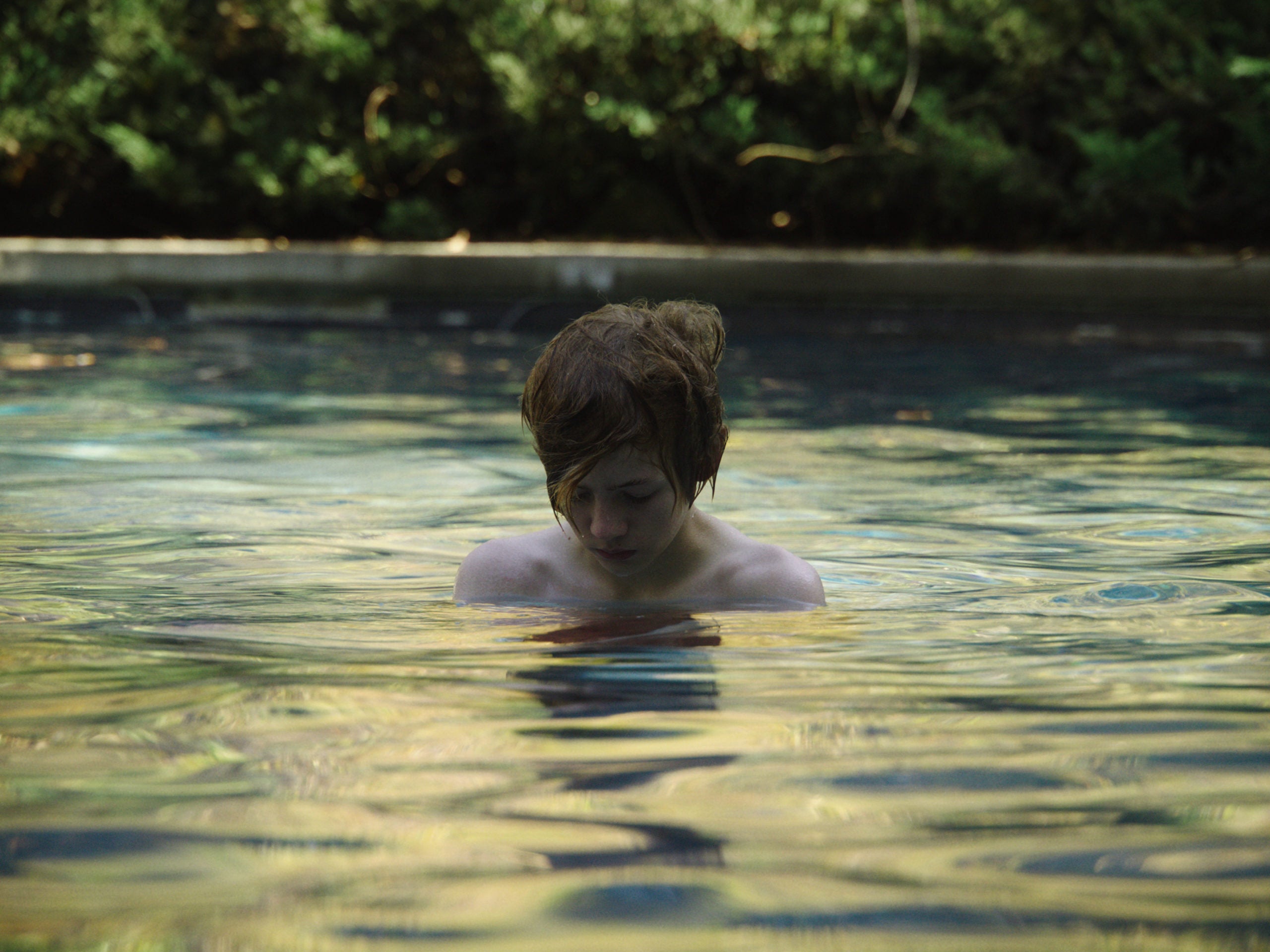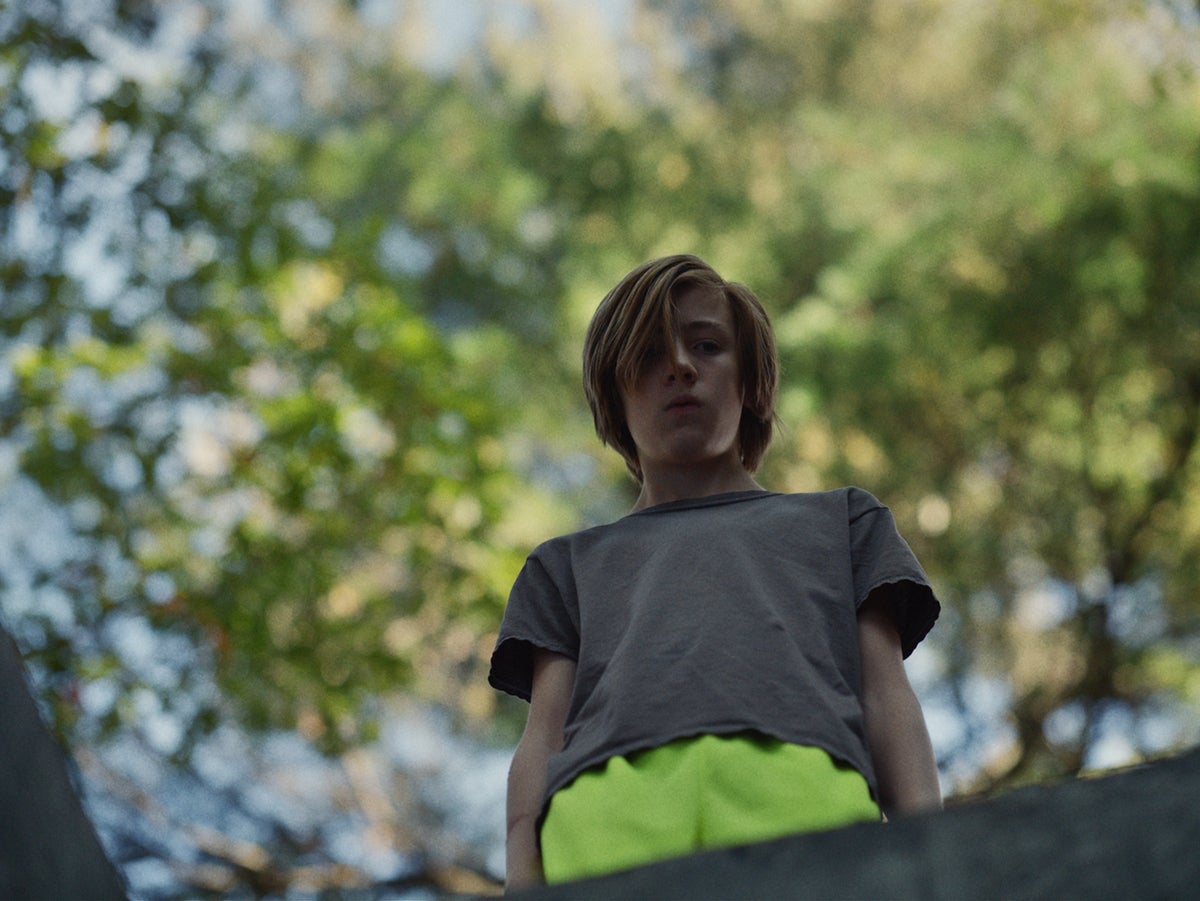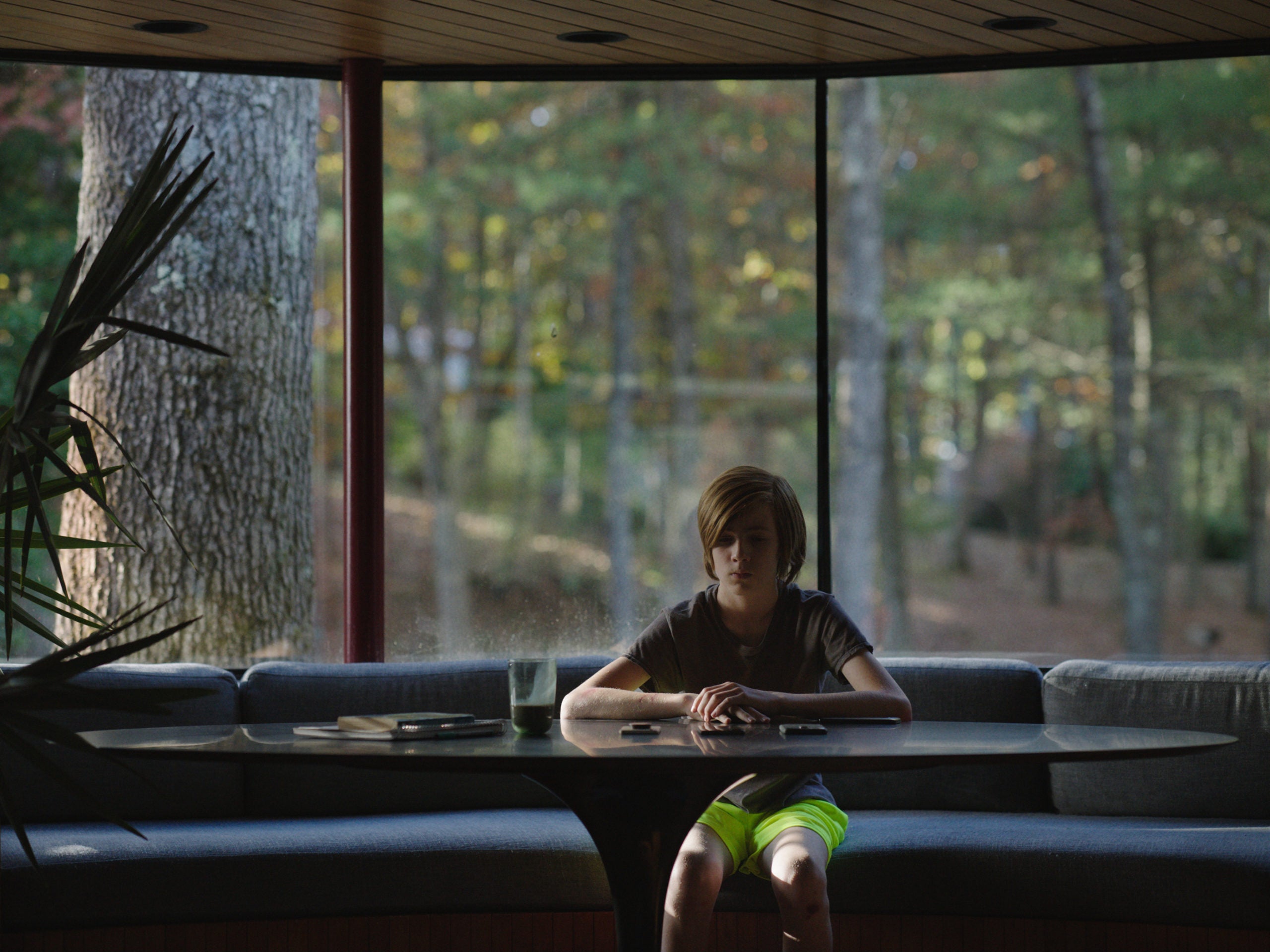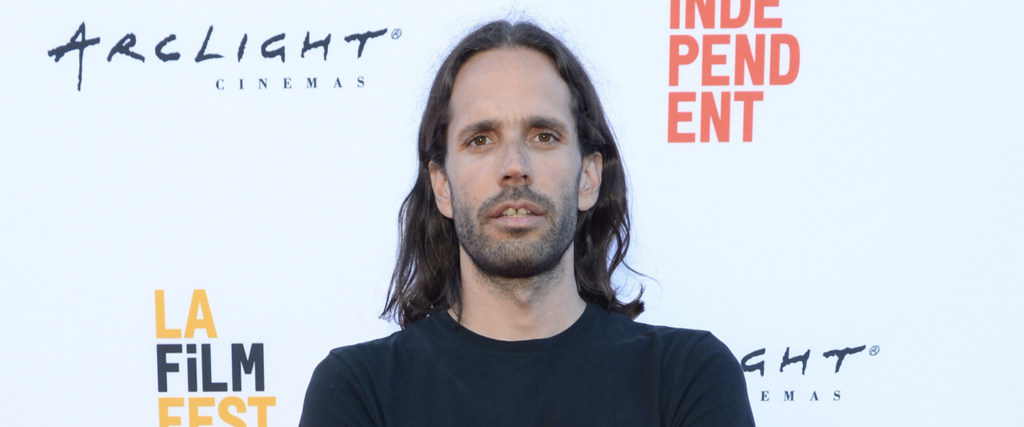The indie drama John and the Hole starts with a seemingly innocuous image: a family of four at the dinner table. We see slightly distant dad Brad (Michael C. Hall), sympathetic mom Anna (Jennifer Ehle) and self-absorbed eldest child Laurie (Taissa Farmiga). But this film is about John (Charlie Shotwell), a 13-year-old who’s mostly uncommunicative. He’s a bright kid but a little withdrawn — maybe not the coolest at his school but hardly an outcast. He’ll ask his mom what it’s like to be a grownup, seemingly longing to finally no longer be thought of as a kid. Living in a beautiful house out in the woods in the suburbs of Massachusetts, John wants for nothing, but there’s something quietly eating at him. And just because he doesn’t say much doesn’t mean it’s not festering.
Then, one day, John hatches a plan. Out in the forest, he discovers an abandoned bunker — essentially, a big hole in the ground in the middle of nowhere. Finding his mom’s sleeping pills, he drugs his family members’ food, waits for them to pass out and then drags them out to the hole. They wake up, confused: Where are they? And what happened to John? The parents are worried for their boy, but Laurie quickly sets them straight: It’s John who’s done this to them. But what’s his plan? Even John doesn’t seem to know, saying very little to his family and proceeding about his day, enjoying the freedom of having a whole house to himself. Does this mean he’s a grownup?
Among the more disturbing elements of John and the Hole is that first-time feature director Pascual Sisto gives us a lot more questions than he does answers. John’s motivation for what he’s done is never made clear — the teenager never opens up, never discusses some fiendish master plan. We’re not even positive if John is necessarily evil — sure, he’s sneaky, particularly when he fools his mom’s friend who comes by wondering where everybody is, but there’s a calmness to his actions that never seems malicious. (That calmness is echoed by his odd, detached way of speaking.) Like John’s family trapped down in that bunker, we’re forced to sit in this uncertainty, and along the way the film becomes an unsettlingly icy examination of adolescent angst, budding masculinity and the secret traumas going on in even the nicest of homes.
Since John and the Hole premiered at Sundance earlier this year, Sisto has been asked to explain the mysteries his film leaves teasingly unsolved. “I love hearing some of the interpretations of the film,” says Sisto, who was born in Spain but studied film and media arts in L.A. He’s happy to delve deeper into John and the Hole’s themes, but as we talk, it’s also clear that the ambiguity of what’s going on within John is important, allowing the viewer to project his own anxieties and childhood memories onto the material. As eerily unempathetic as John can be, there’s something about him that I think most men will recognize — those feelings of inadequacy and unmanliness that caused us as kids to almost shut off parts of ourselves, lest we be seen as weak and vulnerable.
In our interview, Sisto and I discussed what made John tick. And he also revealed the real-life news stories that inspired the creative direction he took with his unknowable protagonist.
John and the Hole’s main character is 13. What were you like as a 13-year-old?
I was very different from John. [Laughs] I think he might be my complete alter ego in some ways. But I did get in trouble — I was a bit of a troublemaker — and I was outspoken and would definitely express my opinions maybe more than my parents wanted. So I did have a sense of rebellion — I’ve asked my parents for forgiveness plenty of times. But, yeah, I was definitely different [than John].
But like with every character in every film, you always find what connects you to them. And I feel there’s a certain level of inadequacy or disconnect from the world — sometimes you don’t understand and you’re trying to understand, and you’re trying to mature at a faster rate than you should. So there’s a relationship that I have with the character.
When you’re viewing things from the outside and trying to understand them, it’s almost like your vocabulary is limited — but you’re trying to write a novel at the same time. There’s this sort of short-circuiting that happens. So on a certain psychological level, I connect pretty well with [John]. Lifestyle-wise, it was completely different — also, I grew up in Spain, different culture, different set of rules, we didn’t have the internet.
One of John’s core issues is one I think a lot of people that age can relate to: They want to be grownups, and they want it now. At that age, you don’t want to be thought of as just a kid.
And that’s present in all his actions and in all his inquiries. It’s connected to his wanting to have more agency in his life, to have more control. That’s what he feels like growing up is, because he sees his parents do things when they want to — everything is on their terms. For him, having agency and control over your life [is] being an adult. But what he doesn’t realize is that, when you’re an adult, you might not have agency or control in your life — you might be guided by other forces, you have work, you have other responsibilities. He associates freedom and independence to being an adult, [but] he [discovers] that you might actually have more freedom as a child in many ways. When you’re a child, you want to be an adult, but when you’re an adult, there’s this longing [for] being a child.
There’s this famous Picasso quote — it’s probably not Picasso, because they associate so many quotes to him — but he’s like, “You’re always a child, the problem is remaining a child when you grow up, that’s the hard thing.” [John] wants to do the inverse. But when you’re an adult, you’re probably looking at children and being like, “Oh, it’s so much easier and fun when you have no responsibilities.”

But the film also grapples with how boys are at that age, which is that they can be cruel and thoughtless. It’s amplified in the film — especially when he’s rough-housing with a friend in a really extreme, scary way in the pool — but it definitely tracks with my own memories of young teens.
I do think children are cruel, in some ways, because they’re coming to terms with their own morality. They don’t yet know that some things can hurt others. That’s why a kid can tell you things frankly: “Oh, you’re fat.” They just say what they see, and they don’t realize the consequences of their actions.
Coming to terms with morality is part of the movie — he’s doing certain actions and doesn’t see the consequences — but he’s also really needing to feel things, and there’s this deep, innate desire to experience. For example, the scene with the friend and the pool, they’re holding their breath [underwater for a dangerously long time]. I remember when I was a child, there was this thing that [kids] would push [on your] chest — you would almost pass out, because you would have no air. It was this crazy thing that you do to feel alive. So, there’s things that you do at that age that might be cruel — there’s things that you do that might be almost playing with life and death.
I’m wondering if there’s something inherent in masculinity that causes boys to behave that way.
I’m sure it happens in some ways with women, too — competitiveness exists in all of us. But what makes John different is that he is cruel but, also, he regrets it sometimes and he’s nervous about it sometimes. There’s this complex range of emotions that happen. The first time he throws [his family] in the hole and then when he confronts the family for the first time, he’s nervous, he’s afraid — he realizes what he’s done. But other scenes, he’s a little colder. It oscillates between a few different emotions, and this is something that we worked [on] with Charlie — we [imagined John] like different characters through the film, and he would be able to switch between the different performances. Sometimes we had different takes on the same scene in different perspectives from the character — some were older, some were more childlike — and we were able to weave those in the editing and make the character a bit more ambiguous.

It’s funny you mention that: One of the things I think Charlie Shotwell does really well is modulate John’s demeanor. Sometimes, he’s very grown up. Other times, he really behaves like a little boy. It reminded me of being 13 and straddling those two worlds and not quite knowing where you fit in.
Even as an adult, we change our behavior depending on who we talk to. You talk to a stranger, you behave a certain way. You talk to an authority figure, you behave a certain way. You talk to a charming old grandmother and you lower your voice and you talk in another different way. So, for example, the way he behaves with [his] tennis instructor or the way he behaves with Paula, the mom’s friend, is completely different than the way he behaves with his friend Peter. And the way he behaves with his parents changes throughout the [film] — at the beginning, he’s really quiet, but toward the end of the film he tries to act as an adult and he’s wearing a suit; he’s trying to do a role reversal with them.
[Charlie and I] had a technique where we would create two or three different characters [for John]. And then I’d just go to Charlie and be like, “Okay, this one is this character,” and he would perform the role in that way. It was interesting for him to sometimes do the scenes in [different] ways, because sometimes there was residue of one [version of the] character that would seep into the other and would make the second performance much more complex. It was quite amazing: He’d start in a cold way, and then became a little bit more empathetic, but then he’d still have some residue of that coldness in the performance.
In real life, when kids and teenagers are in the news for doing terrible things, we often hear that he was “a quiet kid.” You could describe John that way. Were you trying to draw parallels between his actions and real-world shootings?
I mean, of course, we all see these terrible [news stories] everywhere. And we did talk about them with Charlie. We always said that, sure, John could be a potential shooter. He could end up in some crazy [news story] like that — of course, it’s still crazy what he did, but it could have led to a darker, more potential wrong. But we always wanted to say, What if this is a story of a character that doesn’t [do something terrible], but has the same issues and the same problems that you see in all these [other] kids?”
I remember that Santa Barbara shooter — he had a YouTube channel with all the videos that he posted about himself leading up to the shooting. He was pretty much a misogynist. Then I read an interview with the parents and the people that knew him, and nobody saw it coming. But if you see the YouTube videos themselves, you completely see it coming. I find that there’s a disconnect between what [troubled] people feel and what they communicate to parents and authority figures — in this case, he had an outlet through this personal video diary that he was able to document his descent into what ended up happening. We were able to see it clearly. But in most cases, you don’t, and those things are kept to oneself and they’re never shared with other people.
That’s the problem. The problem is silence, and that’s why there is this silence throughout the whole film — there’s something about the unspoken or the unseen that is the cause of all these problems. It’s the things that you don’t talk about. So when we were developing this story, we were like, “Why should we talk about [John’s issues] if they are unspoken?” Sometimes, certain families don’t communicate their issues and they’re afraid of repercussions — or they’re afraid of expressing themselves fully. They’re afraid to say they’re depressed — they’re afraid to say all these things. That’s what becomes a pressure cooker inside — they don’t have an outlet, a form of communication or expression.
That’s why I do feel art and creativity is a good way of releasing all these demons — it allows you to confront things in a very direct way. In the case of John, he lives self-contained — he’s like a little pressure cooker. So, at one point, all this builds up and he finds this bunker. He finds the pills, and then all of this connects to an action that he does — it’s almost intuitive, impulsive. It’s visceral — it’s not something premeditated or something that he’s been planning for years. It’s something that happens. And then he needs to cope with the responsibility of what he’s done.

In interviews, I’ve seen people ask you to diagnose John. They want to know if he’s on the spectrum, for instance. I thought that was interesting: To me, I’m assuming you intentionally didn’t want to spell out what’s going on with him. But in your own mind, did you consider what’s “wrong” with John or answer whether or not he was “bad” or “evil”?
We thought about it, and it’s been brought up, like you said, in interviews. It’s like, [for some viewers] that’s the reassurance — that’s the easy answer to it. “Oh, he has a condition. He has this.” And then the film completes itself for them that way.
I and Nicolas [Giacobone], the writer, knew that he wasn’t a “psycho” from the beginning. He wasn’t this kid that was the classic example of the school shooter. When I talked to Charlie, we always said that he’s not like that, and when I talked to Michael and Jennifer, we always said, “Look, there’s no clear antagonist here. I want to create the idea of a wholesome family that if you look at it from the outside, through the windows, they would appear to be a normal family.” That’s why there are so many shots through the windows, as if we were observing them from the outside. And from the outside, they looked like a perfect family in a privileged neighborhood living a good life. But then within all that, even though it appears that they have a certain affluence and they have a certain wholeness, there’s something that’s still [lacking].
I’m curious about the fact that the family is very well-to-do. That seems to be an intentional choice on your part.
There is a different level of confidence in the upper-middle class — there’s a safety net in everything they do. There’s always this sense of security that exists. What the film does [is talk about] the difference between what you do and what you don’t do. It’s what [the family] doesn’t do that creates the situation.
When we started, we didn’t want to have the film be exactly about class — but I will say that there was another case that happened during the writing of the film, the affluenza kid. It was this kid that took the car and ran over a bunch of people and killed a bunch of people. In the courtroom, the lawyer — [Ethan Couch] came from a rich family — and the lawyer claimed that the kid had a sense of affluenza, meaning that his affluence didn’t allow him to have empathy and see suffering in other people. He was unable to see the harm that he had done, and because of that, he should be treated differently.
I do think that’s present in the film in some ways — this affluenza that exists when everything’s padded and all the corners are rounded off. There is no sense of danger. There is no sense of risk. There is no sense of being spontaneous, either. So what John craves is a sharp corner — he wants a loose end. He wants to find something outside of this crafted bubble that he’s living in.
Without giving away the ending, I like that there’s a rhyming that goes on between the first shot and the last: They’re both of the family at the dinner table. It seems to speak to everything John and the Hole is about — especially the idea of what happens when families don’t talk.
For me, it was very important that we shot that same shot twice. We did it at the beginning of the film when we first established the family. Then at the end of the film, it’s the same composition. Obviously, it’s a much longer shot and we’re slowly zooming out to reveal the shot. It’s almost like those games where you see two images and you have to find the differences, but for me, the differences were psychological. It’s when you look at one image without [any context] and when you look at the same image knowing everything that happened.
The first time we see the image, it’s like an archetypal family having dinner — there’s nothing to it. But when we see that last image at the end — with everything that happens, and the silence, and the fact that they’re not dealing with it, and the fact that they’re moving on with their lives — it’s so much more loaded. Psychologically, all the characters have changed radically and they’re completely different people. But outwardly, they feel and behave the same way.

